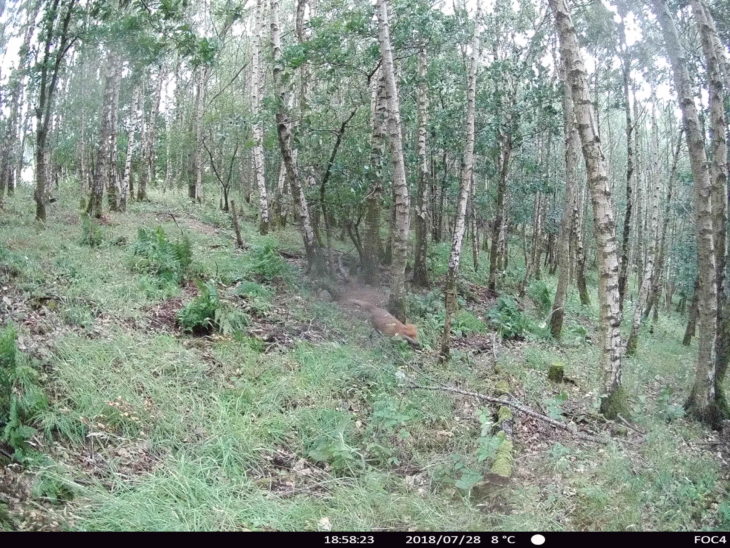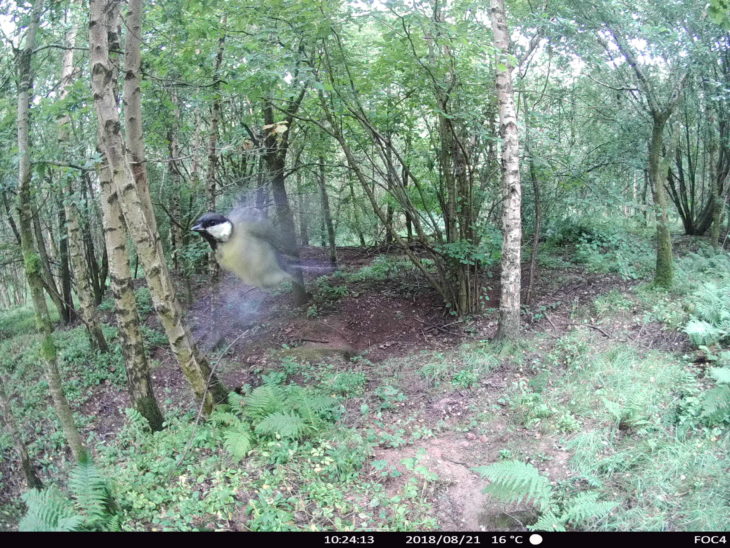Caught on Camera
You may have noticed footage and pictures appearing on our Facebook page from camera traps.
Camera traps are being used more and more frequently in research. This is because they are non-invasive, they don’t have any effect on the animals you are monitoring. They are usually ignored completely. It’s also a much more reliable method for catching overnight activity than a sleepy human sitting out in the woods.
They are often used in research for everything from catching reproductive behaviour, dispersal patterns and understanding migration patterns, to the impact of climate change or smaller changes within the environment. As using them allows a large area to be monitored without someone having to be there awake 24/7. Having a recording is valuable as more people can verify what you’re seeing.

This footage can be used to build up information about how an animal behaves. We can learn things about a species that no one has ever seen or recorded before, or confirm stories about some strange behaviours that have been speculated in the past. Once enough data has been built up we can start to see when things don’t fit the ‘normal’ pattern. An unexpected change in an individuals or a group’s behaviour could indicate something important for that species.
At the Falls of Clyde, we have quite a few trail cameras dotted around the reserve. They are mainly pointed at some of our badger setts at the moment hoping to confirm activity for our badger watches. Although sometimes they catch other animals too.
The heat this summer has caused our badgers to exhibit extreme stress responses. They have abandoned their main setts and moved to smaller satellite setts around the reserve, often closer to water or wetter areas and more reliable food sources.
The badger’s favourite food is earthworms and the heat made it very difficult for them to find as many because they sunk lower with the water table level. This led to them looking for other food sources possibly berries and cereals and anything else they can find. We have found a number of turned over and destroyed wasps nests early this summer. Badgers like to eat everything within a nest but will usually wait till the end of the summer when the larvae are much fatter to eat them, so they must have been getting desperate.

Every week I go to each camera on site replacing the rechargable batteries and SD card. Once back at the office we go though every bit of footage to see whats been happening. However while the camera traps may not have caught quite as many badgers in the woods this summer they have caught some good shots of other animals on the reserve, including rabbits, foxes, deer, great tits and even the odd escaped cow.
The good news, however, is that this week we have started to see some badgers back around one of the main setts. Hopefully, the recent rain has helped them recover and return to more commonly seen behaviour patterns.
Cait McCauley, Falls of Clyde Assistant Ranger Intern
Help support our vital work and join us today!
Help protect Scotland’s wildlife
Our work to save Scotland’s wildlife is made possible thanks to the generosity of our members and supporters.
Join today from just £3 a month to help protect the species you love.
Preface
You may have noticed footage and pictures appearing on our Facebook page from camera traps. Camera traps are being used more and more frequently in research. This is because they …
